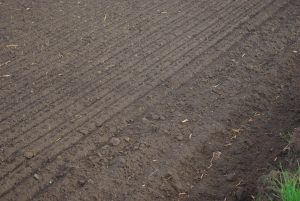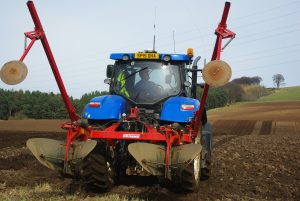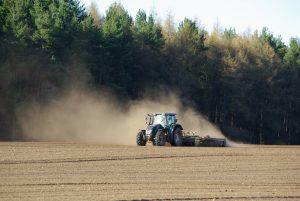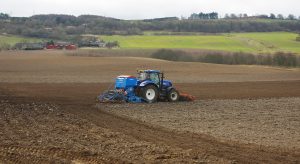The good news is that the good spell of dry weather has continued allowing us to get most of the spring drilling done. As I write, we have about 14 hectares to do out of 137, so we should get finished this week.

The bad news is that the good spell of dry weather has continued, meaning that we have only had 120mm of rain here so far this year. Put that together with the total rainfall for October – December last year of 101mm, and things have been dry. Nature has a habit of balancing things out, so we are in for a prolonged wet spell at some time. The other take on this is that we have had quite a wet decade, so perhaps things have turned a corner, and we are in for a few dry years?
The fertiliser spreader has been in action this week, putting the final fertiliser on the winter barley, and the spring barley has also had its ammonium sulphate. This gives it some nitrate, as well as all the sulphur it needs for the season.
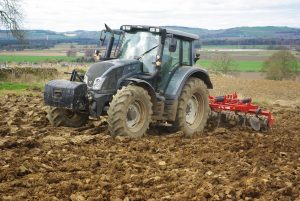
The new cultivator has also been in action, though it is beginning to show its sore points. It is really designed as a stubble cultivator, but we are using it also as a primary cultivator (that is cultivating ground that has been ploughed).
Because the ploughed ground is so hard we are losing bits off the tines, mainly the points. We will have to have a think over the summer as to what modifications we may need to make for this type of work.


